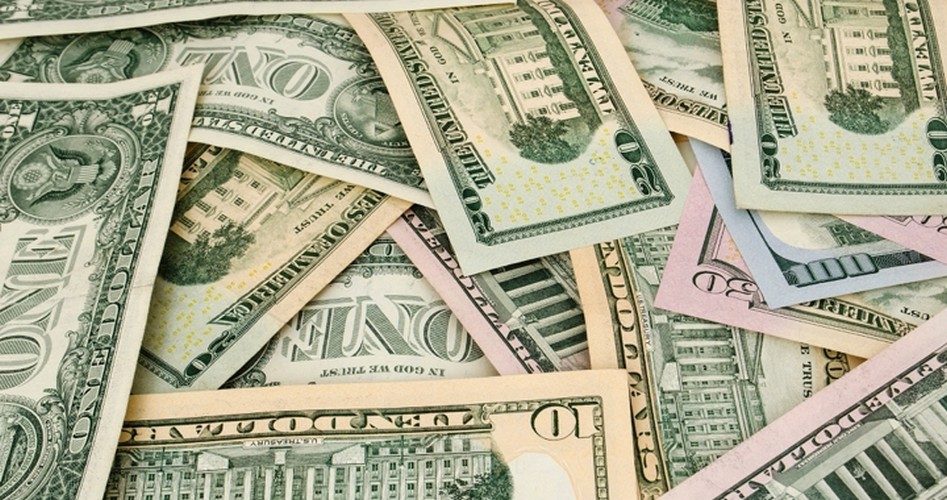
President Trump wants a weaker dollar, for several reasons. First, he is determined to keep two of his primary campaign promises: a stronger U.S. export industry and a smaller trade deficit. Second, he is running for reelection.
At the moment his strategy is to use his Twitter account to accuse China of manipulating the value of its currency while at the same time pressuring the Fed to lower interest rates. But he could move beyond Twitter by ordering the U.S. Treasury (over Secretary Steve Mnuchin’s objections) to buy more foreign currencies, forcing their values higher. Meanwhile, the Fed appears to be open to reducing interest rates further in the coming months.
Is this a good thing? Will a cheaper dollar achieve the president’s objectives? Or will he be setting the stage for a catastrophe most commentators are studiously avoiding?
Let’s consider the benefits of a weaker dollar. Foreign buyers of American goods would find that their currencies buy more U.S. exports. Higher prices of foreign goods would reduce those imports into the United States, reducing the trade gap. As Max Ehrenfreund noted in the Washington Post: “If foreigners can buy U.S. dollars cheaply, products made in the United States become cheaper for them. As a result, there is more demand for U.S. exports — a shift that would help Trump achieve his ongoing promise to reduce the U.S. trade deficit.”
The U.S. dollar, compared to foreign currencies, has been getting stronger. The ICE Dollar Index, which measures the purchasing power of the U.S. dollar compared to a basket of six foreign currencies (the Euro, the Japanese yen, the Pound sterling, the Canadian dollar, the Swedish krona, and the Swiss franc), is close to its highest level in more than two years. The much broader trade-weighted U.S. Dollar Index published by the Federal Reserve Bank of St. Louis reveals that the U.S. Dollar has increased in value, relative to the world’s currencies, by 12 percent in just the last 19 months.
Let’s put this into perspective. Exports amount to about 11 percent of the nation’s gross domestic product, or about $2.4 trillion in a $22 trillion economy. The rest of the economy consists of American consumers purchasing home-made and foreign-produced goods.
A stronger dollar has numerous benefits for American consumers. A dollar now buys 12 percent more of foreign-made goods than it did less than two years ago. That means that importers of foreign goods like Walmart are paying less for them and passing the savings on to the U.S. consumer.
A stronger dollar is good for the housing industry. It takes around 400 pounds of copper and thousands of board-feet of lumber to build a single family home. Those commodities are traded in dollars, which make them cheaper.
A stronger dollar is good for oil refiners. Since oil, like lumber and copper, is traded in dollars, a refinery gets more crude for their dollars, which lowers gas prices for consumers.
A stronger dollar keeps price increases in check. It’s no wonder that the Fed continues to be surprised that its measure of inflation, the PCE (Personal Consumption Expenditures), continues to come in under their two-percent threshold. If the dollar buys more, that means that prices are declining, not increasing.
A stronger dollar makes it more attractive to investors, especially those buying bonds, for two reasons: The dollar is the world’s de facto reserve currency (more than 90 percent of the world’s economic transactions use the dollar), and the U.S. Treasury continues to pay interest at rates far above those offered elsewhere.
That last point is critically important in understanding the risk of a potentially weaker dollar. The U.S. Treasury has sold some $22 trillion worth of government bonds, but interest rates have remained muted. At present, the federal government is paying only about 1.5 percent interest to investors (buying 10-year Treasuries) who are happy to receive it. This is keeping the federal deficit far below where it otherwise would be.
But if the president is successful in jawboning (tweeting) the dollar down, it could trigger an event that most commentators are not touching. Treasuries could lose their luster, higher costs of basic materials from abroad — steel, oil, copper, lumber — could trip up the economy, which would reduce tax revenues. This would force the Treasury to sell more bonds to cover the increased deficits into a market that has lost its appetite for them. Putting it another way, a weaker dollar could set off an irreversible downward slide: first the economy, then tax revenues, then widening deficits, then more issues of Treasury debt to cover them, forcing bond investors to conclude that the U.S. government isn’t the AAA-rated credit risk they have long believed (hoped) that it is.
Brian Chappatta, a Chartered Financial Analysis (CFA) who writes for Bloomberg, put the risk this way:
Like most people, I aim to avoid existential dread. I try not to think about the fragility of the vast interconnected global economy or the complicated infrastructure systems that we take for granted, or what would happen if the social contract broke down.
Usually, that’s not too difficult. Lately, however, American politicians’ reckless attitude [that would include President Trump and a number of Democrat presidential posers] toward the U.S. dollar has made me consider those uncomfortable thoughts…. They’re putting at risk a policy that could bring the financial ecosystem to its knees.
An Ivy League graduate and former investment advisor, Bob is a regular contributor to The New American primarily on economics and politics. He can be reached at [email protected].
Related articles:



